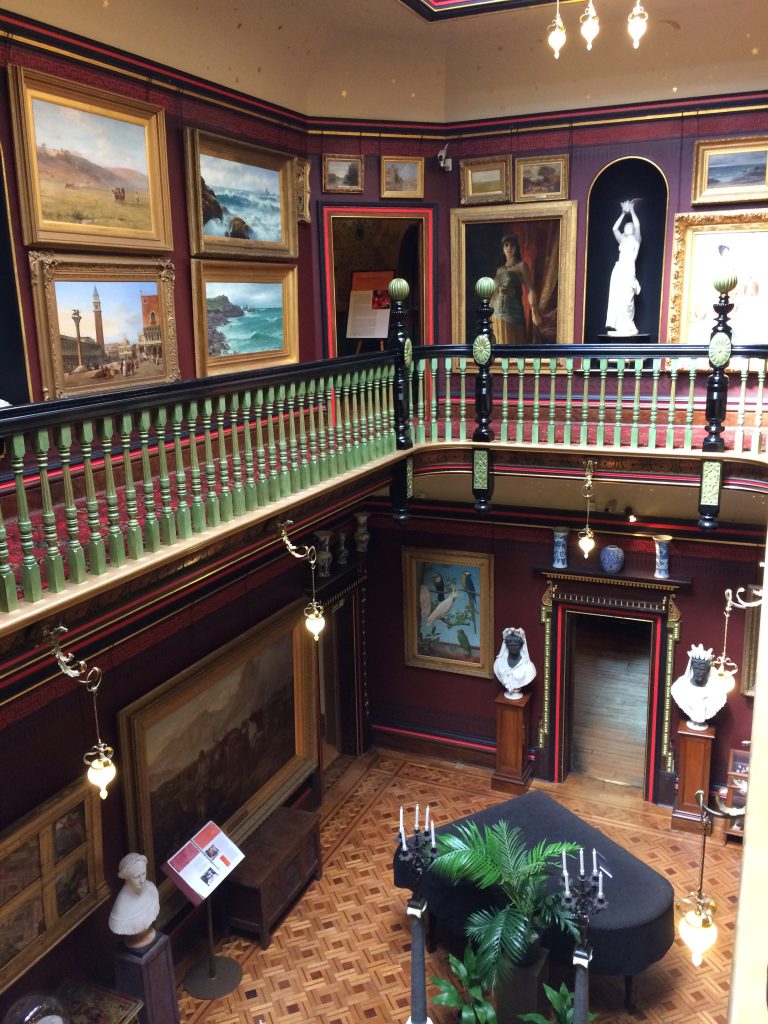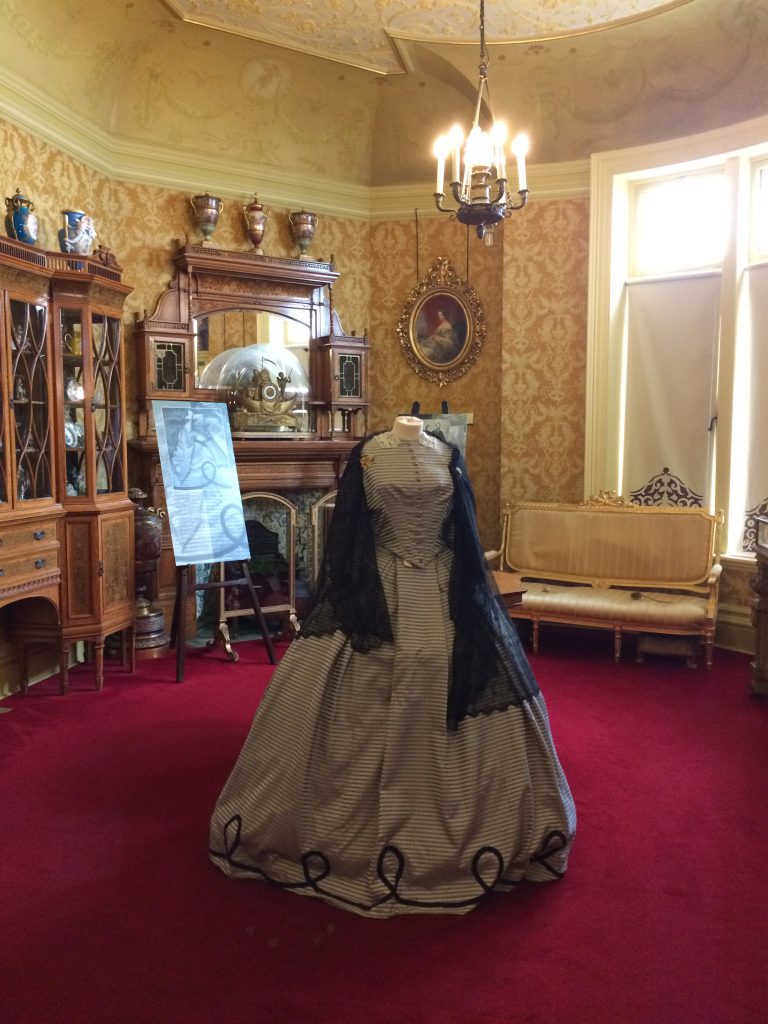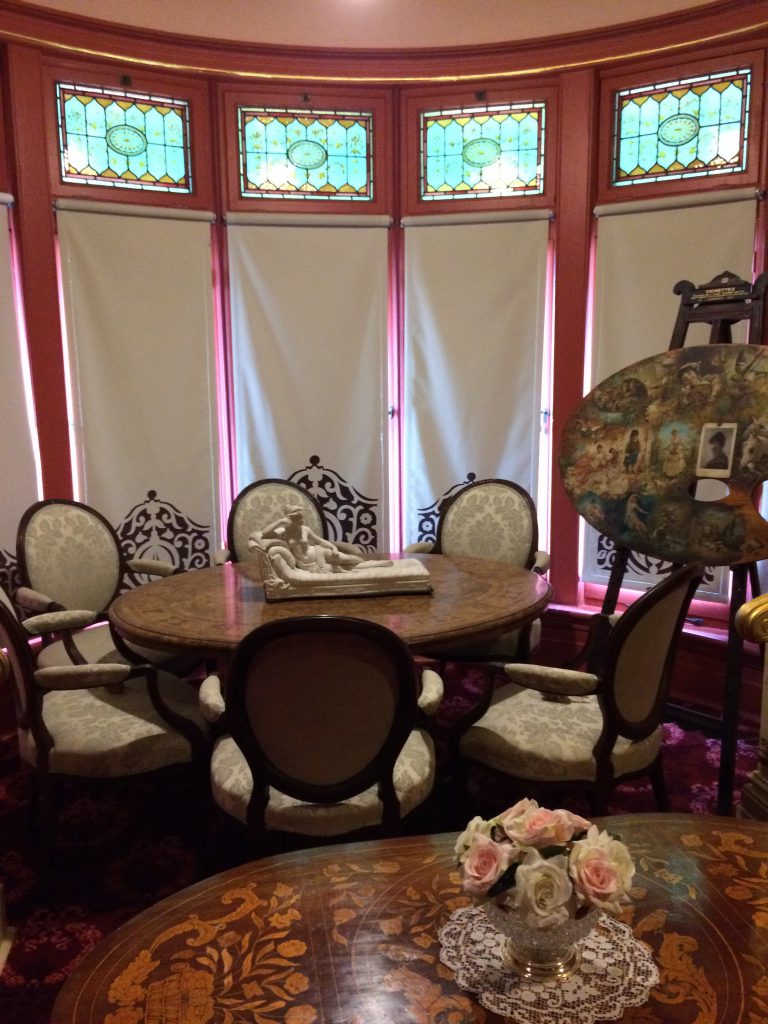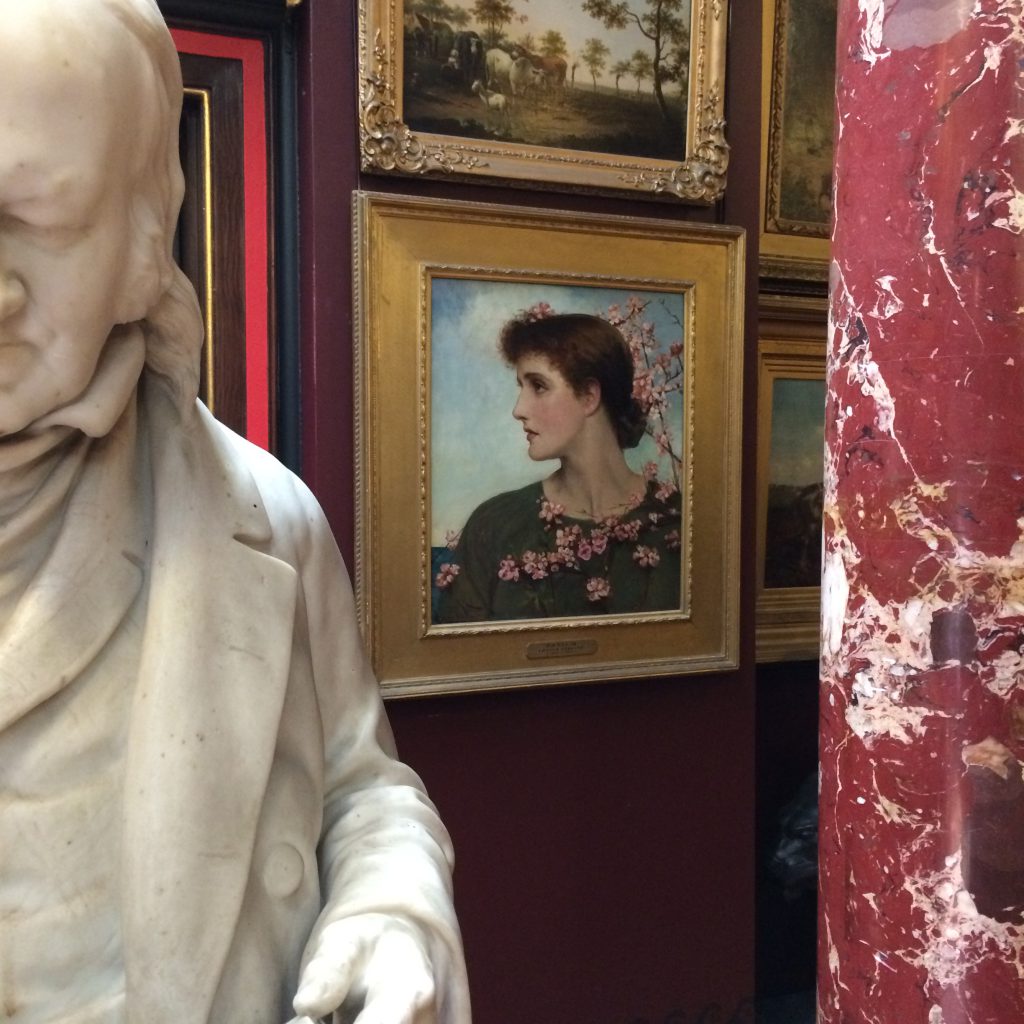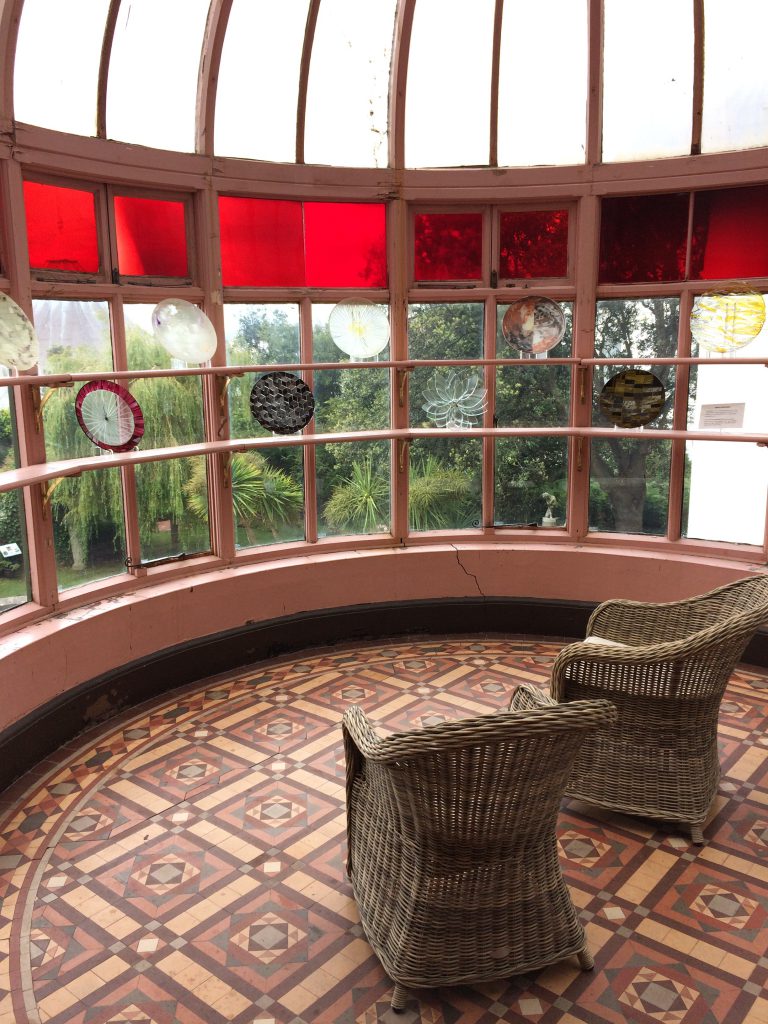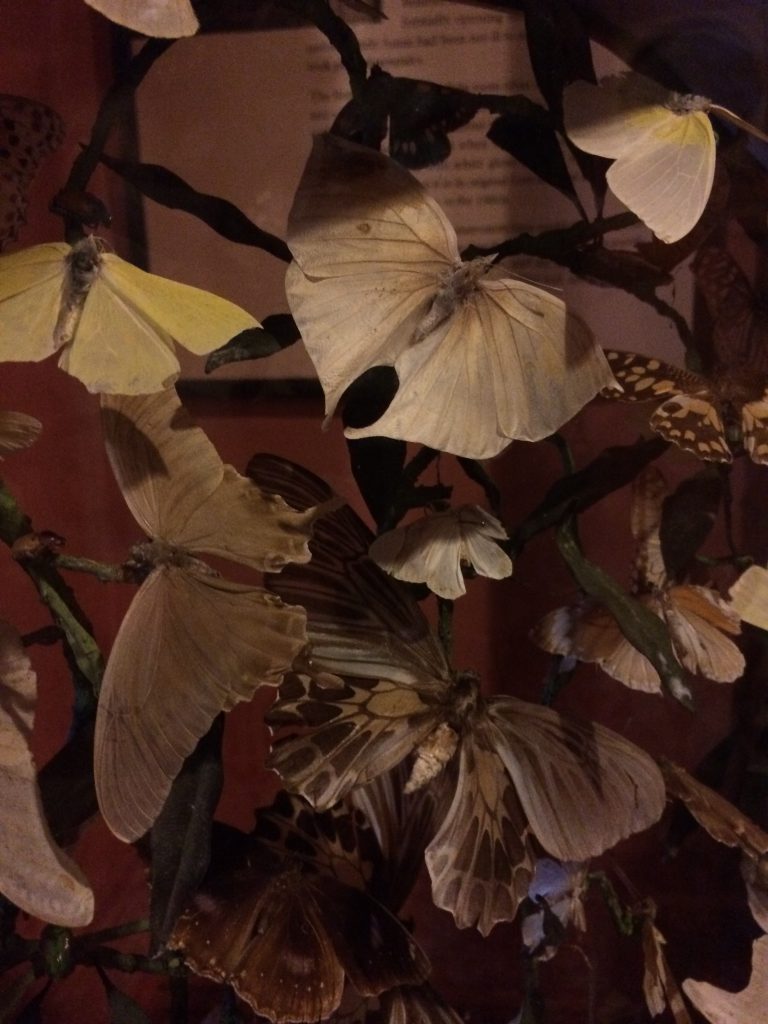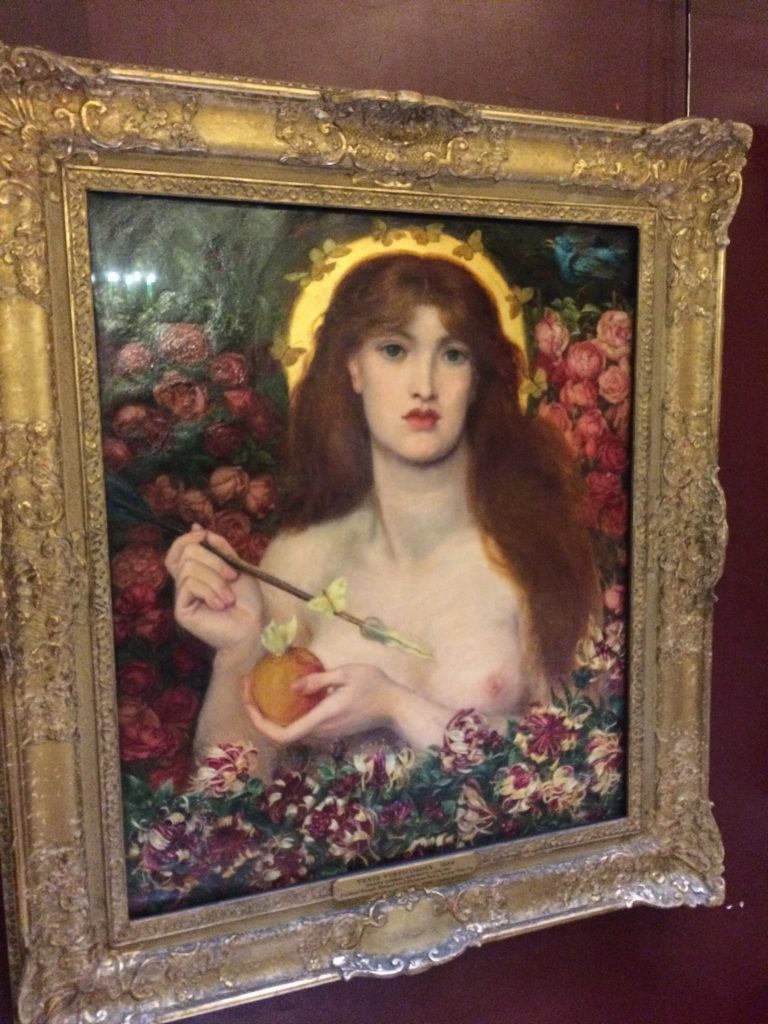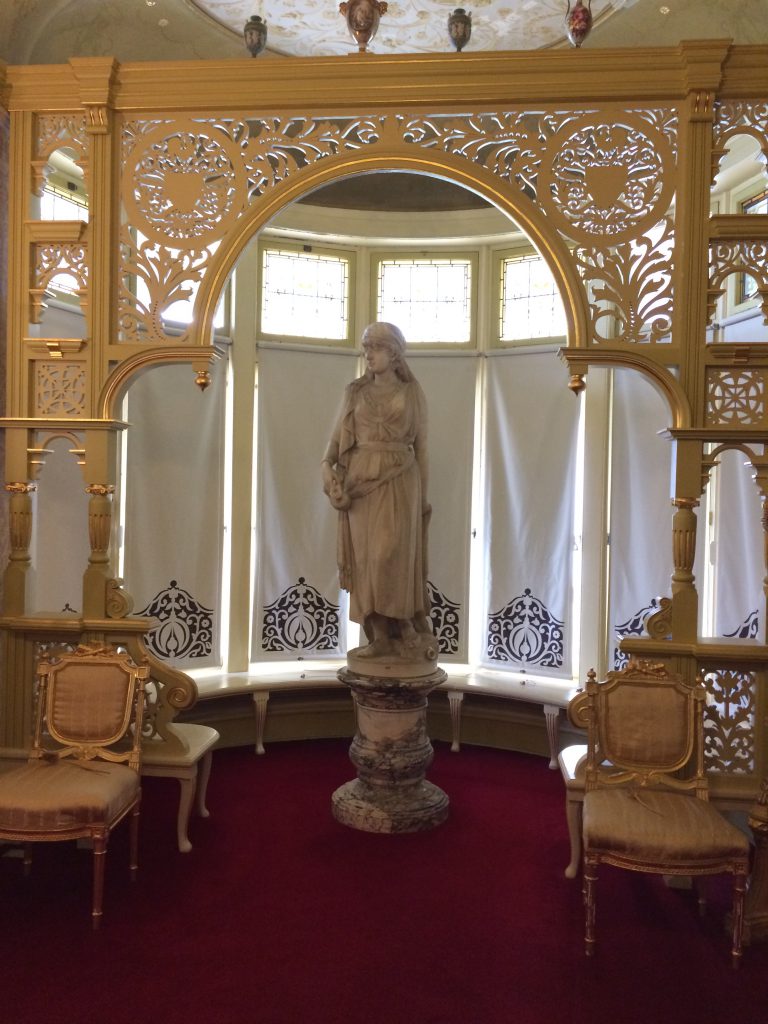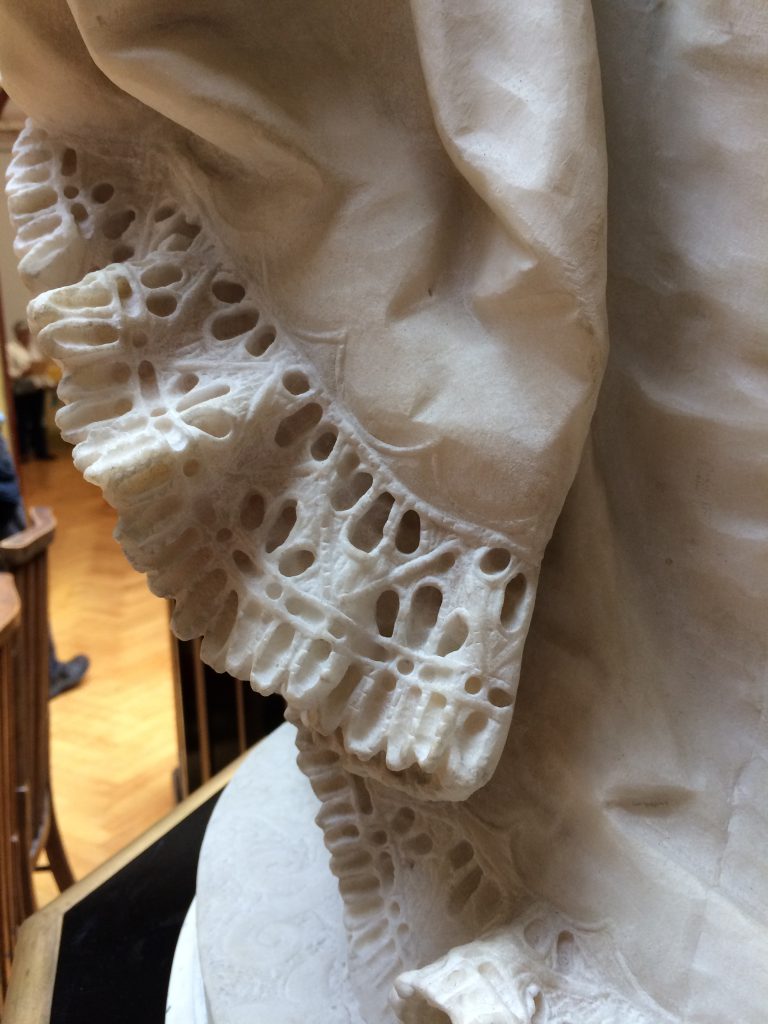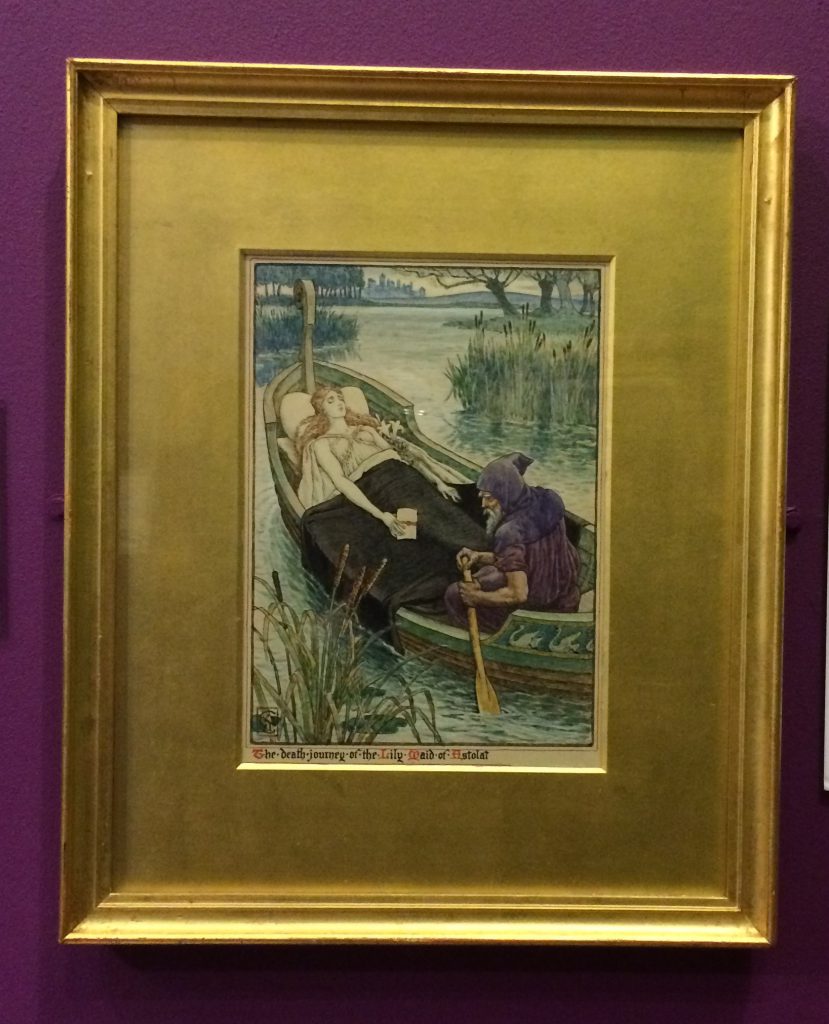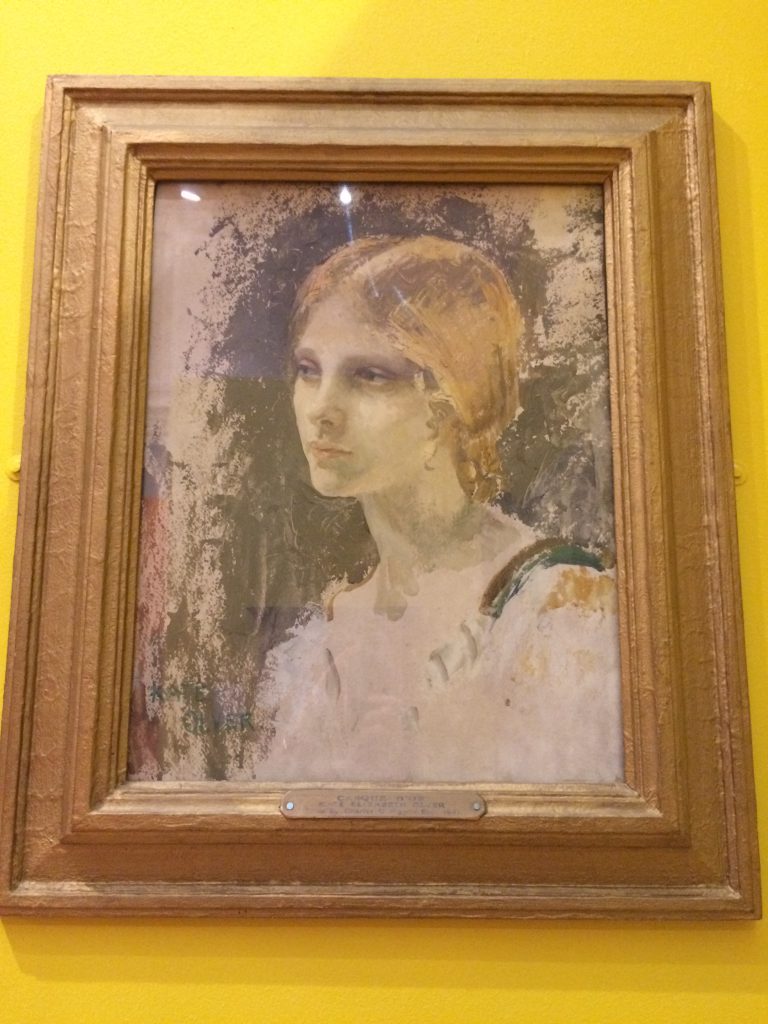Nestled into the cliff face above the pier at Bournemouth is the hidden gem of the Russell-Cotes Art Gallery and Museum.
From the roadside it appears as a single-storey, unremarkable Victorian building, but from the beach below it offers intrigue, tempting you with its turrets peeking above the bushes in the cliff top garden. The road entrance is only apparently used these days for newly-wedded couple; we plebs must make our way to the garden entrance to gain access through the modern extension on the west side of the house. Strangely in keeping with the rest of the house, the new extension adds its own style to the mixed bag of stylistic references. In that perfect way of Victorian eclecticism, the house borrows from oriental, Italianate, Scottish Baronial, classical and French traditions, reflecting the owners’ collections and travel itinerary.
So who would live in a house like this? Merton and Annie Russell-Cotes, that’s who. Pretty much a self-made pair: entrepreneurs, hoteliers and collectors. A Victorian love story of a boy shipped off to Glasgow following his father’s death, bereft of his inheritance, only to discover his true love in Annie Nelson Clark, the daughter of his art and literature loving friend John King Clark.
After marrying and working in Dublin, Merton was recommended the south coast of England to alleviate his chronic chest ailments, so he bought the Bath Hotel in the centre of Bournemouth. Having renovated and extended the hotel in floor plan and in name – it became known as the Royal Bath Hotel because of its association with Edward VII, at the time scraping a living as the Prince of Wales – the Russell-Cotes then set to work building a family home next door. The building is in fact the vision of Merton, but his intention was to build it as a gift for his wife. Their story appears to be one of deep love and wedded bliss as our guide Pippa has interpreted it – she is leading us through the building on a mammoth 2 hour tour – what she calls a drop-in tour. You can drop in to the tour at any time, likewise you can drop out at any time if you’re getting bored with her commentary. It says much about Pippa’s commentary that the numbers double (if not more!) by the end of the tour. She brings the house to life, describing the decor, the history, some of the painting, the couples love of celebrity and their shoulder-rubbings with actors of the day. In fact, I’m wondering if I should check out Pippa’s credentials as her delivery is so polished and her storytelling so professional, I’m wondering if she is an actor herself.
She portrays Russell-Cotes as a self-publicist, encouraging friendships with royalty and actors. She tells us about the Lillie Langtry loo, the red glass in the conservatory, the Rosetti painting, the Japanese collection, the Napoleonic wine cooler and campaign lamp (both actual possessions of Napoleon in whom Merton had a particular interest). Benevolently, the Russell-Cotes, erstwhile mayor of Bournemouth and having secured the title of Sir and Lady, left the house and it’s substantial collection to the people of Bournemouth, with a separate sum bequeathed to pay for the upkeep of a curator for a number of years.
Perhaps they would have turned in their family mausoleum had they known that a 1960s curator had taken it upon himself to paint the rich red main hall peppermint green, or gloss paint the woodwork in the boudoir brilliant white, rather than retain Mrs R-C’s preferred pink! Happily a lottery grant has helped to restore the house almost to its former glory. Wallpaper and paint samples hidden behind furniture and electric fittings have helped to identify wall hangings and commission replacement furnishings. The painted ceilings, friezes and cornices are almost there, but the conservatory with its peeling paint and emergency buckets still has a long way to go.
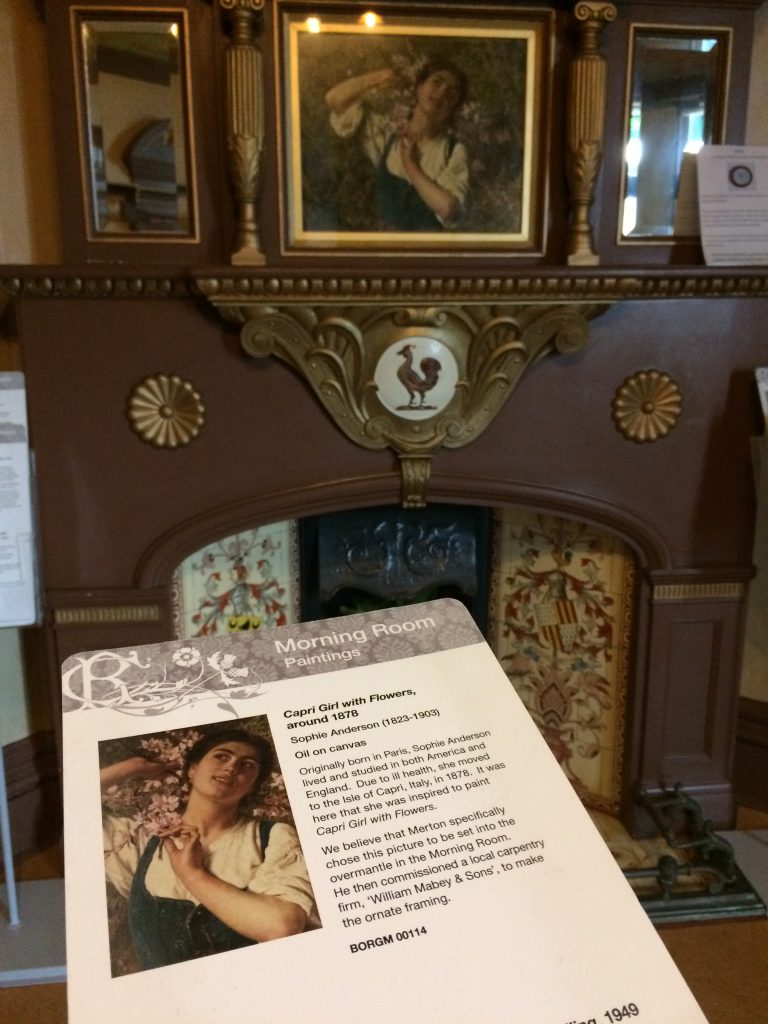

If you aren’t inclined to take the tour, there is a perfectly good introductory film at the entrance to the museum just before you enter the original house through the conservatory. There are also information boards available for descriptions about the paintings and sculptures in the collection. And it is possible to wander through the house appreciating the rooms, the art and the antiques without having to read up about each individual item. Unlike many historical buildings the Russell-Cotes Museum does not force you around a predetermined route with ropes and barriers to keep you in check. You may wander at your leisure and take a break on any of the many chairs not sporting a teasle. A lovely touch, I think, to deter you from sitting on a delicate fabric or potentially hazardous item of furnishing!
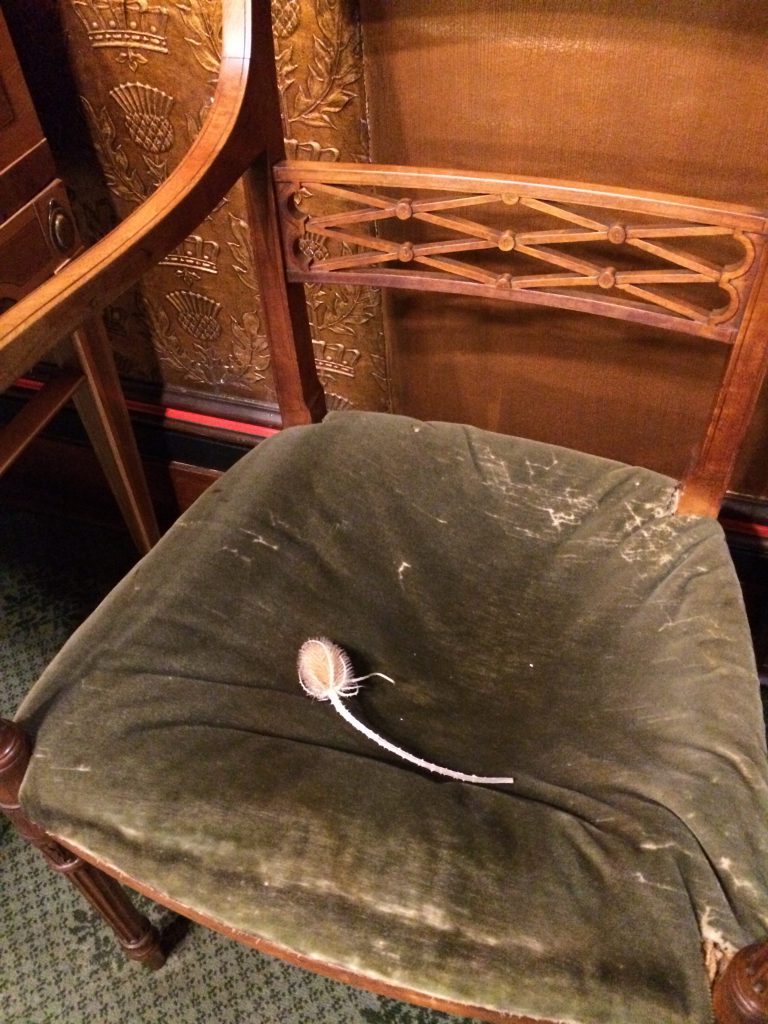
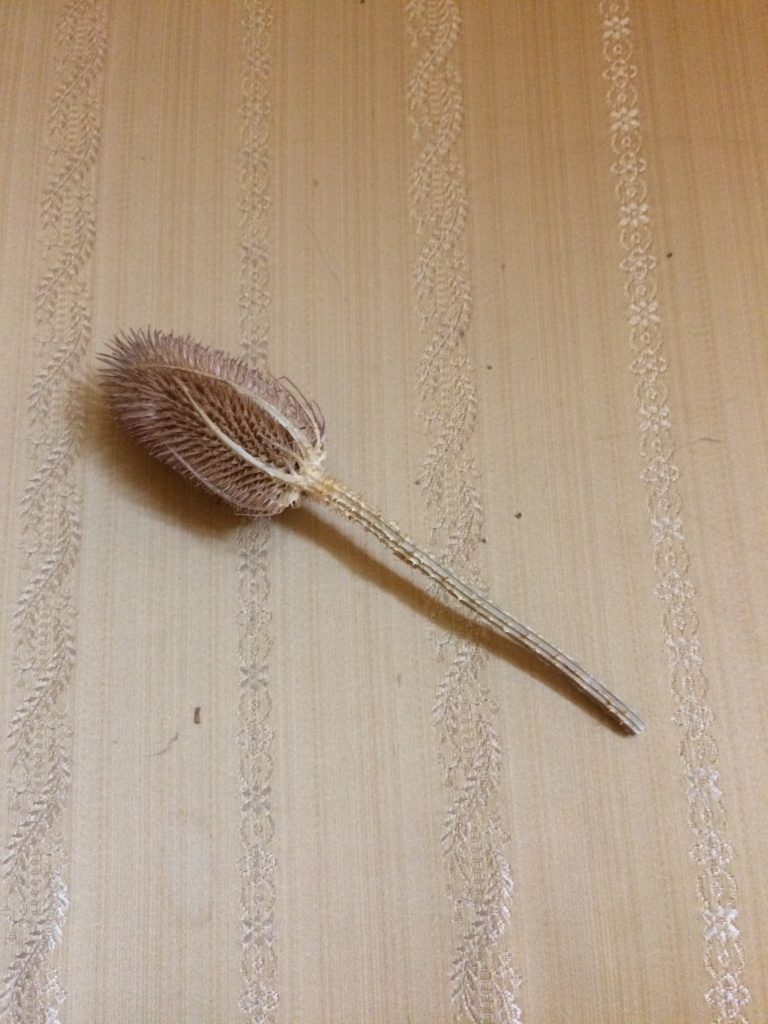
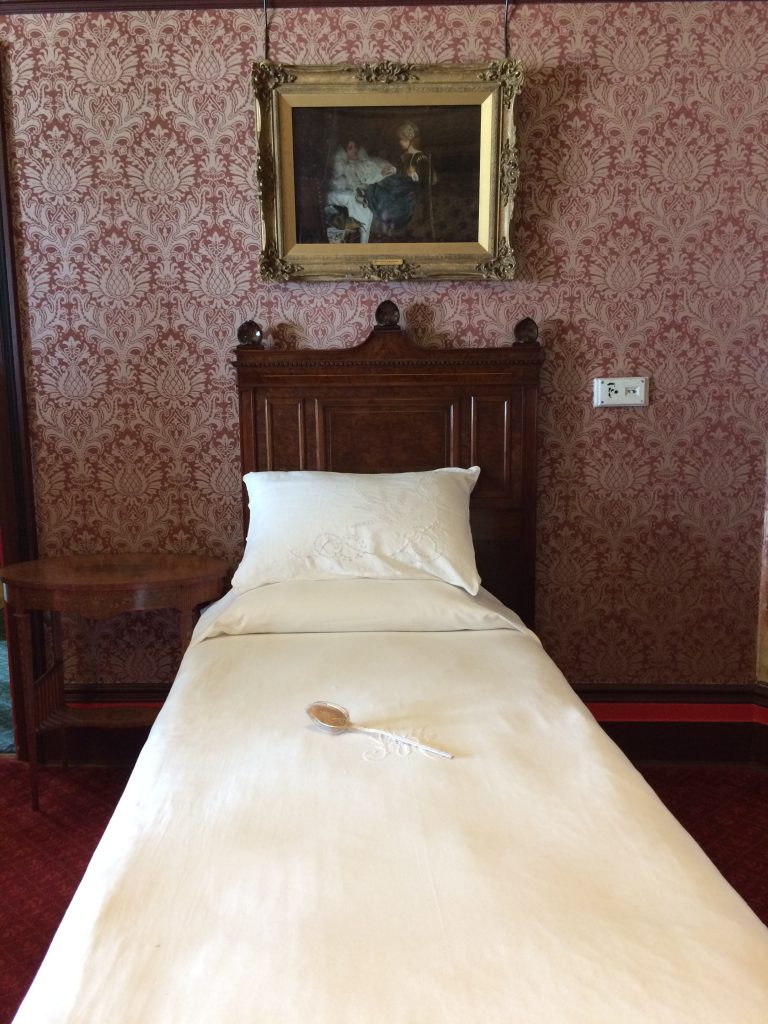
In fact it’s probably best to take a seat every now and again, as after a while you find the Florence-effect coming on. There is far too much in one place to appreciate everything! It’s handy therefore that Pippa is on hand to draw our attention to some of the stand-out pieces in the collection, where the money was spent on bespoke art and where saving were made on catalogue-bought fittings. She points out that, ironically, the paintings, sculpures, china cabinets, curios and stuffed animals are only a small portion of the enormous collection which would have cluttered the house in the Russell-Cotes’ time.
Of course mid-Victorians were exposed to the styles of art, architecture and industry from around the world, particularly with the opening of the Great Exhibition at Crystal Palace in 1851, but it wasn’t until the 1880s that Japan began to open its doors to the world, and en route back from New Zealand the Russell-Cotes chose to purchase some exceptional tourist souvenirs – some of which, on reflection, should probably have stayed in the country of origin. And if that makes you think of the Elgin Marbles, then you might be surprised that they (or plaster cast replicas) adorn the frieze about the entrance staircase. Other friezes, also catalogue-bought, are made from compressed paper – I’m immediately interested considering my minor obsession with Victorian papier-mâché, but in this case the cherubic bottoms adorning the upper levels of the main hall haven’t fared so well and one has a thumb-sized dimple in his buttock.
As well as the impressive collection of Victorian and Pre-Raphaelite art, there are amazing Sèvres and Imari pieces of porcelain dotted around, Māori art, and Japanese carved Ivory. In fact there are Japanese pieces all over the place, having overspilled from the Mikado’s Room overlooking the little Japanese bridge in the garden. Apparently on their return to Bournemouth and before the house was built in 1901, the Japanese collection was housed in a suite of its own in the Royal Bath Hotel and only guests worth their salt – royalty, actors, dignitaries, etc – were invited to view the treasures which travelled back from the Far East in 100 packing cases.
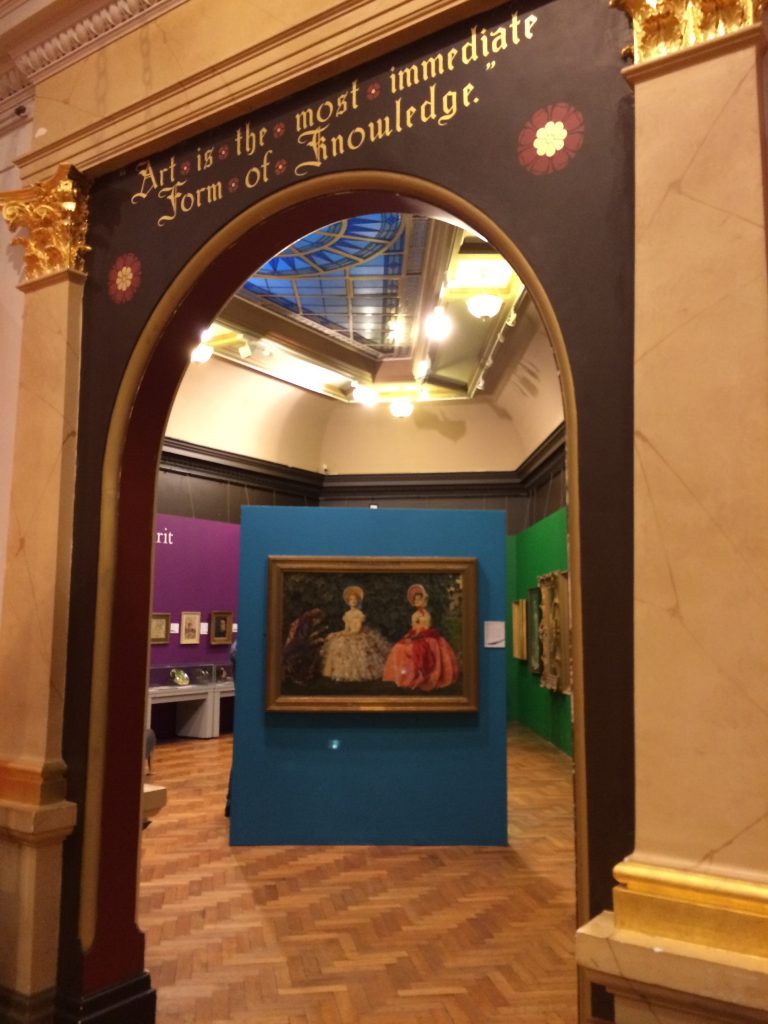
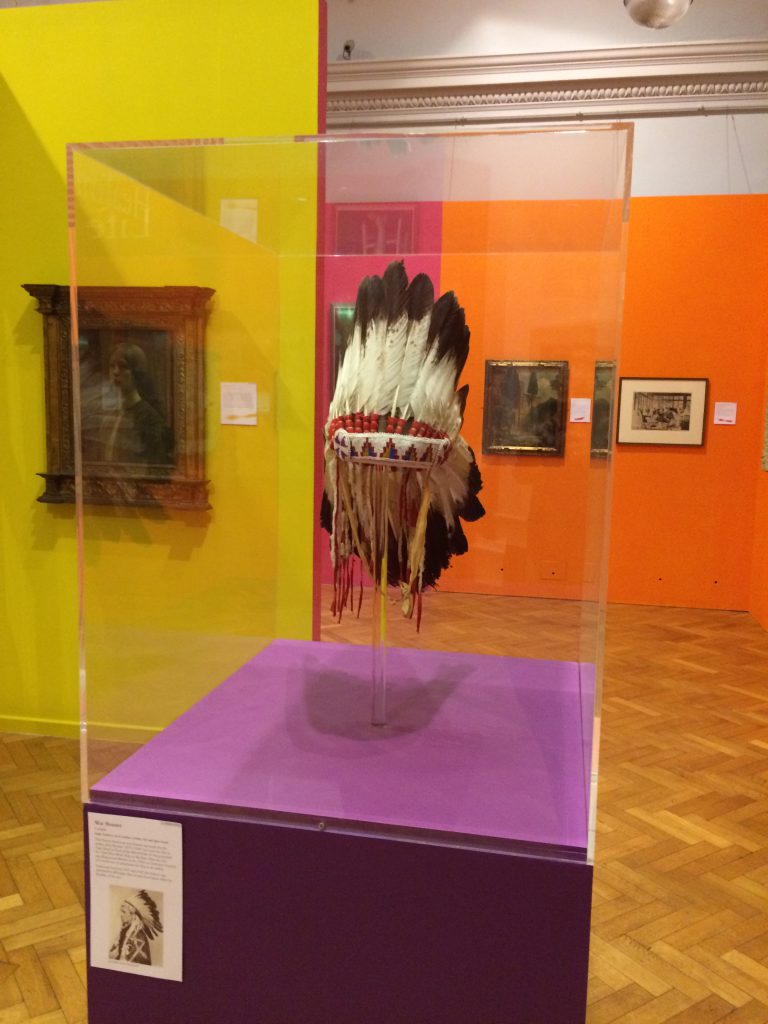
Beyond the classical and oriental inspired Main Hall, an extension leads on to what was originally the kitchen garden. These four rooms now form an art gallery housing works of art from the collection and in the furthest two rooms is the current exhibition – Refracted: Collection Highlights – curated with the help of the local LGBT+ community. Sections are inspired by the colours of the rainbow and even if none the individual pieces of art are to your taste, you’ve got to admire the arrangement of the galleries – it’s a joy to walk round the exhibition just to get the juxtaposition of the painted walls! I do like the work on display though – particularly Walter Cranes and the Casque D’or by Kate Olver – but to be honest I’m all Uffizi-ed out now and I’m off to the cafe for a spot of lunch.
My head is still spinning with some of Pippa’s stories, and there is far too much to impart – so I think you should make the trip to Bournemouth and have a look at the museum and collection yourself.
The Russell-Cotes Art Gallery & Museum is open 10am-5pm, Tuesday-Sunday and Bank Holiday Mondays. It occasionally closes for special events. It costs £6 for adults and OAPs and £4 for children and concessions on means-tested benefits. Worth every penny!
